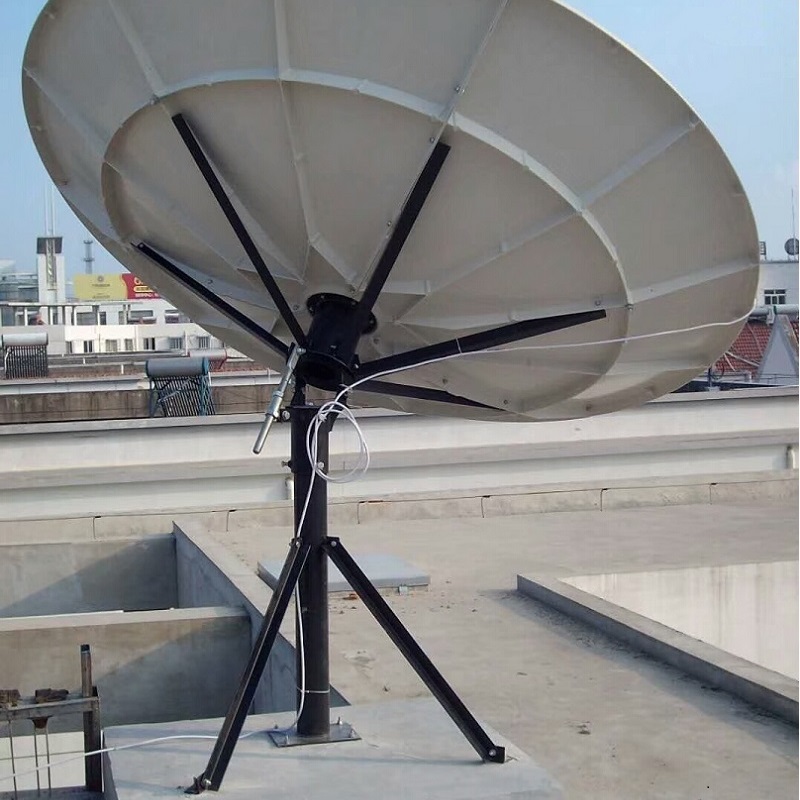Huada fiberglass antenna is a component in satellite TV line electrical equipment that radiates or receives electromagnetic waves (the receiver only receives but does not produce radiation). Engineering systems such as radio communication, broadcasting, television, radar, navigation, electronic countermeasures, remote sensing, radio astronomy, etc. rely on antennas to transmit information using electromagnetic waves. In addition, when using electromagnetic waves to transmit energy, non signal energy radiation also requires antennas. Generally, antennas have reversibility, meaning that the same pair of antennas can be used as both transmitting and receiving antennas. The basic characteristic parameters for transmitting or receiving on the same line are the same. This is the reciprocity theorem of antennas.
Antennas are classified from different perspectives:
① According to their nature of work, they can be divided into transmitting antennas and receiving antennas.
② According to their usage, they can be divided into communication antennas, broadcasting antennas, television antennas, radar antennas, etc.
③ According to the working wavelength, it can be divided into ultra long wave antennas, long wave antennas, medium wave antennas, short wave antennas, ultra short wave antennas, microwave antennas, etc.
④ According to their structural form and working principle, they can be divided into line antennas and surface antennas. The characteristic parameters of an antenna include pattern, directivity coefficient, gain, input impedance, radiation efficiency, polarization, and bandwidth. At present, the development of antennas has basically met the needs of various wireless transmission services. In certain special applications such as remote sensing, space communication, etc., with the continuous improvement of antenna theory, antenna types will continue to develop.
Main features:
The SMC reflective surface is molded with high precision, good consistency, and does not deform; Low density, high specific gravity, as strong as steel and as light as aluminum, with a compressive performance 12 times that of aluminum;
Multiple reflective surfaces combined, with good interchangeability; Corrosion resistance, aging resistance, service life up to 15-20 years;
Specially designed feed sources and reflective surfaces perfectly match to achieve high efficiency in transmission and reception; The electric polar coordinate tracking structure can meet the requirements of full orbit satellite coverage;
Easy to install and adjust. The reflective orange peel surface design is rain resistant and reduces damage to the high-frequency converter.
Electrical characteristics
Working frequency (ku Band) 10.75-12.95GHz
Center frequency gain: ku Band: 47.2dB
3dB wave width: ku Band: 0.75 °
Side lobe: -20dB
Polarization isolation degree:>30dB
Voltage standing wave ratio: < 1.3:1
Noise temperature: 28 ° K
Feed source connector: ku Band WR75
Mechanical characteristics:
Reflective surface material: Single glass fiber reinforced unsaturated polyester sheet-like molding compound (SMC)
Antenna type: center feeding
Bias angle: 22.3 °
Installation form of feed source: single arm support/three pole support
Elevation adjustment range: 0-90 degrees, sustainable fine tuning
Azimuth adjustment range 0-360 degrees continuously adjustable
Transportation specification: 83KG
Environmental adaptability:
Wind load:
Normal operation: 22mps
Preservation: 45mps
Adapt to temperature
Normal operation: -40~60 ℃
Preservation: -45~70 ℃
Atmospheric conditions: suitable for humid, high salinity, and polluted climate environments
Huada 2.4m fiberglass satellite antenna TV station equipment hot-dip galvanized Zhongxing 6B antenna pot
The Huada 2.4-meter fiberglass antenna is a commonly used communication antenna with a wide range of application scenarios. Here are some operation steps for the Huada 2.4m fiberglass antenna:
Installation: Before installing the Huada 2.4-meter fiberglass antenna, make sure to choose a suitable installation location and follow relevant regulations and guidelines. Ensure that the antenna is firmly installed on a stable support structure, avoiding excessive distortion or deformation.
Adjustment: After installation, adjust the Huada 2.4-meter fiberglass antenna to ensure correct connection with communication equipment. Adjust the angle and direction of the antenna to achieve optimal signal reception and transmission performance.
Maintenance: Regularly maintain the Huada 2.4-meter fiberglass antenna, including cleaning, inspecting, and replacing damaged components. Keeping the antenna clean can reduce signal interference and improve performance.
Monitoring: Use monitoring equipment or software to monitor the performance of the Huada 2.4m fiberglass antenna. This can help you detect and solve problems in a timely manner, ensuring the normal operation of the antenna.
Backup: To prevent unexpected situations, it is recommended to regularly backup the relevant data and configuration information of the Huada 2.4m fiberglass antenna. This can quickly restore the working status of the antenna when needed.
Please note that the above steps are for reference only and may vary depending on the specific application scenario and device. Before performing any operations, please refer to relevant user manuals, technical documents, or professional guidance.












